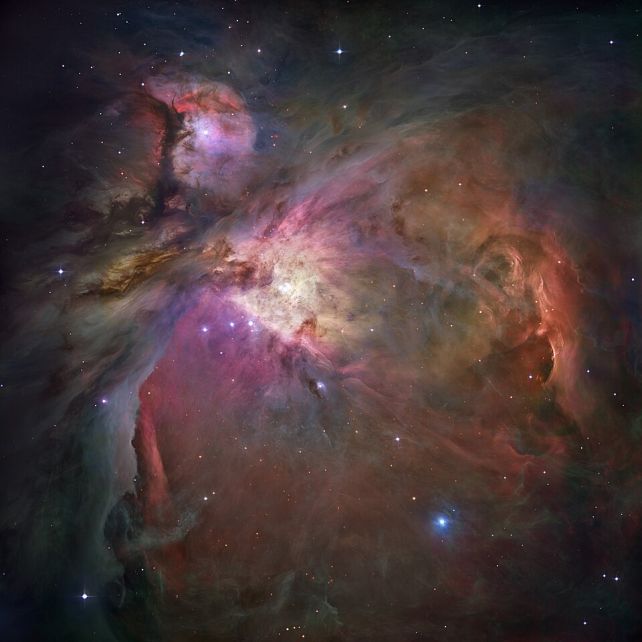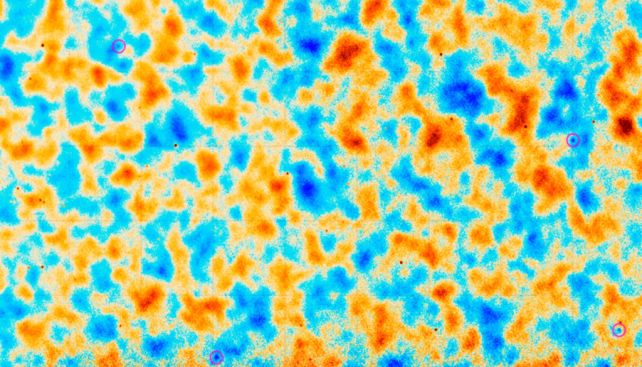A new analysis of the sky has finally confirmed where the missing half of the Universe's visible matter has been hiding.
In the space around galaxies, it lurks as huge, invisible clouds of ionized hydrogen. Normally, this would be impossible to see – but a large international team of astronomers and astrophysicists has developed a technique that reveals its hiding places, out there in the darkness amidst the stars.
Survey programs confirm the missing half of the Universe's material takes the form of an intergalactic mist of hydrogen expelled farther from the active cores of galaxies than anybody previously thought.

"We think that, once we go further away from the galaxy, we recover all of the missing gas," says astronomer Boryana Hadzhiyska of the University of California, Berkeley and Lawrence Berkeley National Laboratory.
"To be more accurate, we have to do a careful analysis with simulations, which we haven't done. We want to do a careful job."
Normal, or baryonic matter, makes up around 5 percent of the matter-energy distribution of the Universe; the rest is dark matter (27 percent) and dark energy (68 percent). Dark matter and dark energy are a whole other thing, but the Mystery of the Missing Baryonic Matter is one that has vexed scientists for decades.
The problem is that we simply don't know where a large proportion of it is. Hydrogen makes up around 90 percent of the Universe by atoms, and 73 percent by mass; so a large chunk of the missing baryonic matter is hydrogen. Scientists estimate that we've misplaced more than 50 percent of the Universe's hydrogen.

Hydrogen in space can be ionized by radiation, causing it to glow faintly, but in the space between galaxies, the gas is too diffuse, and the glow too faint, for this to be easily detectable.
But there's more than one way to look for an invisible cloud of hydrogen. One method that has been gaining traction is by looking at changes in the light behind it – the cosmic microwave background, the fossilized 'first light' in the Universe that permeates the cosmos.
"The cosmic microwave background is in the back of everything we see in the Universe. It's the edge of the observable Universe," says cosmologist Simone Ferraro of Lawrence Berkeley National Laboratory. "So you can use that as a backlight to see where the gas is."
As this light travels through diffuse clouds of ionized hydrogen, it can be brightened or dimmed as it scatters off electrons in the gas. This is called the kinematic Sunyaev-Zel'dovich effect. As you can probably imagine, though, the cosmic microwave background is really faint and hard to see too.

So, the solution is stacking. You take a bunch of observations and lay them on top of each other in stacks to emphasize really, really faint features. The researchers did this for more than a million glowing red galaxies within a radius of 8 billion light-years of the Milky Way.
Their results showed that the halo of hydrogen wrapped around these galaxies is much larger than we thought. It also offers the tantalizing possibility that the haloes are much larger than even this survey was able to detect.
"The measurements are certainly consistent with finding all of the gas," Ferraro says.
As is so common in astronomy, though, the discovery also raises new questions. Hydrogen haloes are fed both by gas from outside the galaxy falling onto it, and active phases of the supermassive black hole at the galaxy's center.

When the black hole feeds at a high rate, its magnetic field launches huge jets of material that can blast millions of light-years into intergalactic space, and powerful winds blast outwards in all directions, pushing any gas inside the galaxy with it, curtailing star formation (since stars form from gas).
The discovery of larger-than-expected haloes suggests that black hole activity may be episodic, turning on and off. This is consistent with other interesting observations of black holes that seem dormant suddenly flaring to life. This is information that is relevant to our models of galaxy evolution.
This is only part of the puzzle. Other attempts to map the Universe's missing baryons show that some of it is bound up in the filaments of dark matter that form the cosmic web, connecting galaxies across vast distances. The team's work has given astronomers a new way to look for the hydrogen; now they just have to put the pieces together.
"This work opens the door for an exciting new line of research," they write in their paper.
"Understanding the connection between gas and dark matter will not only aid future cosmology analyses, but also help our understanding of galaxy formation and evolution. This paper adds an essential piece to a growing body of works aiming to unravel the complexities of cosmic gas in the era of large cosmological surveys."
The research has been submitted into Physical Review Letters, and is available on arXiv.
